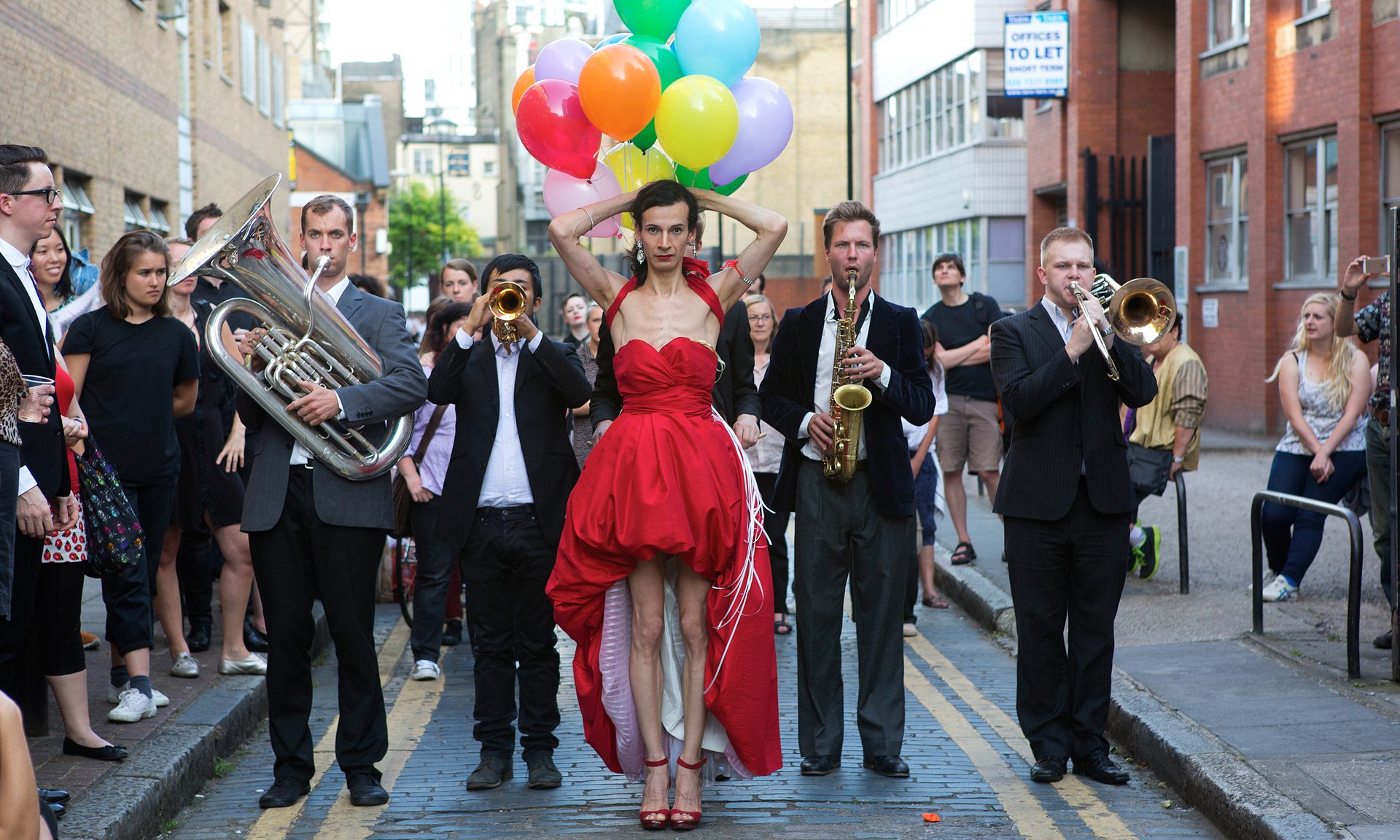As we enter the theatre space in dim light, we see a figure on the stage, sitting on a chair. A body, a human body. A male human body. An ‘effeminate’ male human body. Attributes noted: long legged, skinny ribbed, strong bone structure, light brown skin. Almost naked, dressed just in red underpants, red high heels and red lipstick. Dark hair is pulled up into a bun: not a man bun, a ballerina’s bun. He looks a little bit like Pina Bausch, and his body might just as well be illuminated with a sign that says ‘trained dancer’. I feel OK about using the word effeminate, I think, because Nando Messias does in his writings about his work. He, she, they want to stake out the territory for the effeminate male body, feeling that there is a need within the discussions on transgender to promote the choice to stay within one physical body (in this case, biologically of the male sex) whilst considering oneself to be gendered as the other (in this case, female).
Gosh, he hasn’t done anything yet, he’s just sitting there quietly, and already there’s tons to think about and write about. I could go on, but let’s get on with the show.
The first solo section in The Sissy’s Progress is one of stylised movement on and around the chair; a choreography of gestural motifs that are repeated, built upon, exaggerated. Legs extend and return; hands run down the face or the body; the face moves into anguished poses, then recovers; the hairpins are pulled out, and the hair tugged and tormented. The body slumps over and is wrenched up. It is intense, and at moments it is close to painting a picture of self-abuse. Meanwhile, a nagging soundtrack repeats phrases over and over again, a demoralising litany of bitchy put-downs.
A team of five tuxedo’d men arrive unexpectedly, one at a time. The performer’s body looks extra-naked posed next to the suits; extra effeminate juxtaposed so starkly with men wearing the uniform of the real man: the James Bond tuxedo. Shaken or stirred?
There is ambivalence in this protagonist and chorus relationship. The men are ostensibly helping, solicitous but with an uncomfortable undercurrent. They put the ballgown on the performer’s body, but at this moment the body is topsy turvy, upside down in a head-stand, so the dress sits over the body with feet sticking out where the head should be. It’s a mixed up, muddled up, shook up world. Once dressed h/she performs a kind of Isadora Duncan inspired elegantly desperate dance for her onlookers, who eye her up ambivalently. There is some ensemble movement work which once again invokes thoughts of Pina Bausch.
Eventually, the artist speaks, asking us to follow as s/he leads off the stage and down the steps, wearing the ballgown, and a fluffy stole decorated with balloons, and we end up outside. There follows a celebratory march through the streets around the Marlborough Theatre to the tune of a brass band, the Brighton Pavilion forming a backdrop. This is all good fun, but perhaps doesn’t have the resonance it did when performed in the East End of London, at the very site where Nando Messias was attacked by a group of five men – for The Sissy’s Progress is an artistic response to that real-life experience, ten years in the making. Or at least, mused upon for many years whilst the artist thought up the response that felt the best. This being Kemptown on the opening day of the Brighton Festival, there is already a carnivalesque feel to the streets, and competition on the party dress front. We pass a beauty clad head-to-toe in gold lamé, someone in a red net tutu sporting wings, and various people in dayglo wigs. It feels right and good, and ultra-safe – but it is worth remembering that even jolly old Brighton, the gay capital on England, is not without its share of homophobic attacks – a fact documented and reflected on in another recent Pink Fringe event at the Marlborough, Kate Shields and Rosanna Cade’s The Safety Map project.
The attack on Nando is acted out within the piece in many ways, sometimes obliquely, for example in the image of the five men circling the artist with ambivalent intention; sometimes in highly abstracted movement motifs that express fear and self-doubt in the face of attack; and sometimes in rather more dramatic and obvious image or action. The artist wisely never reverts to naturalistic acting for herself or her chorus, but there’s a point where it suddenly almost ‘gets real’ and this is carried through with great finesse.
Brazilian performance artist / dancer Nando Messias has created a powerful show, uniting the personal and the political, and proving that vital and engaging political performance can be created with visual imagery and physical action. The message is written on and by the body.

